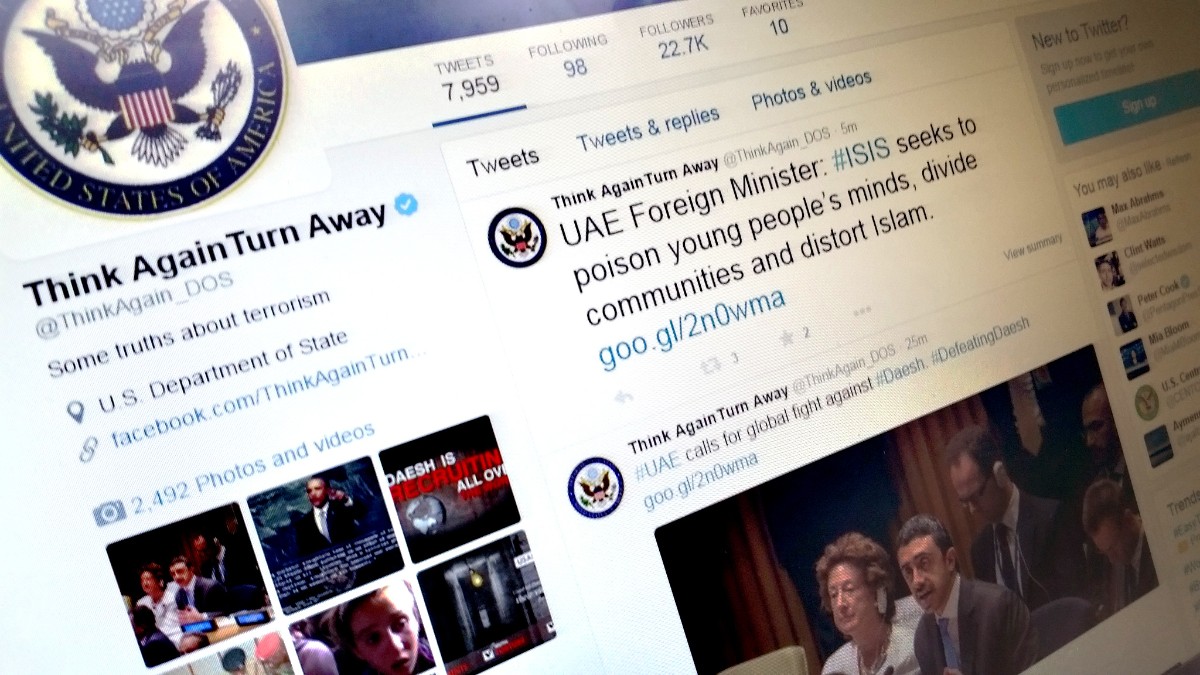
Ch-Ch-Changes in the US Anti-Extremist Messaging Strategy
The US Government is currently struggling to find the most effective method to reduce the number of people influenced by or recruited into terrorist groups like ISIS or Al Qaeda.
There are essentially several ways this can be done:
- Silencing the recruiter: This can involve censoring, banning, arresting, killing, or otherwise eliminating the source of the message.
- Deterring the potential recruit: This can involve making the cost of a potential recruit’s actions greater than the benefit of performing those actions.
- Disabling the potential recruit: This can involve making it impossible for a potential recruit to carry out actions. This is often accomplished through law enforcement methods, or other methods of inhibition.
- Altering or managing the perception of the potential recruit: This method is the most time consuming and proactive of the options. It requires relationship-building, counter-messaging, education, information, and experiences that invalidate the extremist message.
In an effort to improve the effectiveness of the anti-ISIS communication campaign, the Obama Administration recently announced changes to the strategy to fight extremist propaganda and recruiting online.
Aside from the changes in DHS, aimed mostly at options 1-3 above, the State Department’s interagency Center for Strategic Counter-terrorism Communications (CSCC) has been tasked mostly with option 4 since taking the issue on. Unfortunately, its efforts have simply not proven sufficiently effective for addressing issues like ISIS recruiting. And it is not as simple as producing “better” propaganda than ISIS.
As a result, the CSCC is being closed down and replaced by a new Center for Global Engagement. Much of the mission it appears to be tasked with closely mirrors the activities undertaken by the CSCC, prompting some to label the new Center’s creation as a mere rebranding.
Of the Center for Global Engagement’s declared strategy, two particular items come to interest:
- Identifying and enabling international partners with credibility and expertise
- Providing seed funding and other support to NGOs and media startups focused on countering violent extremist messaging;
In these areas, the ways in which the US conducts this strategy matter significantly, as these areas will form the basis for creating or boosting credible anti-extremist voices. But the US must do so without endangering the credibility of these voices. The biggest weakness the US faces in the extremist propaganda war online is not a lack of skill or expertise, it’s a lack of credibility with the audience it is trying to influence. This lack of credibility exists for two basic reasons:
- The United States is not seen as a disinterested party—it has an established agenda, and is not viewed as having the target audience’s best interests at heart.
- The target audience susceptible to ISIS propaganda has already lost faith or believes it has been wronged by the United States or the government under which they live.
For these reasons, the US and its allies must work to boost the voices of credible non-state actors in the propaganda battle. This will involve empowering individuals and communities to take over the anti-ISIS movement. This doesn’t mean coopting or officially sponsoring particular Imams or anti-extremist NGOs, but rather supplying these individuals and groups with the education, tools, or training they need to independently boost their voice.
While the CSCC previously worked to help build counter-extremist messaging centers in the Middle East, the effectiveness of this strategy is questionable. A government (or US) supported “messaging” center suffers from some of the main credibility problems I have discussed previously.
Instead, efforts aimed at boosting counter violent extremism (CVE) messaging should be less direct, and more diffuse.
Rather than boosting large, officially labeled messaging centers overseas, the US and its allies should focus on skill-based training centers that are not specifically focused on CVE. This takes the messaging out of the hands of government, and places it in the hands of individuals to develop their own messages and efforts after they have gained access to the education, training, and equipment needed to enable them. A potential ISIS recruit’s own family and peers are the most effective at discouraging or dissuading their recruitment. For this reason, it is they who must carry the message, not an official messaging center, and not the US Government. The US must work to enable these average people to build their own voices, rather than telling them what to say.





